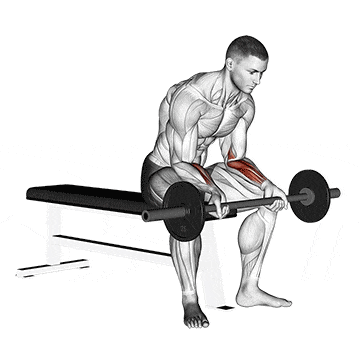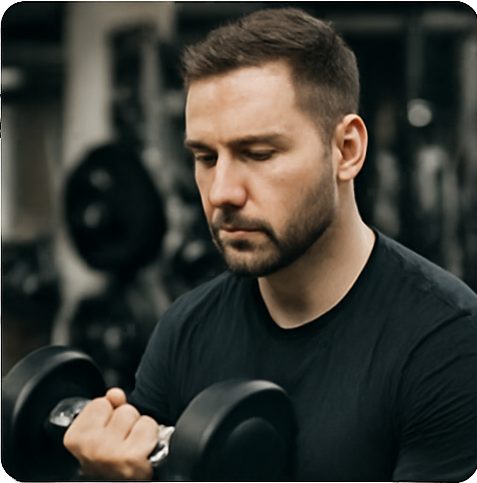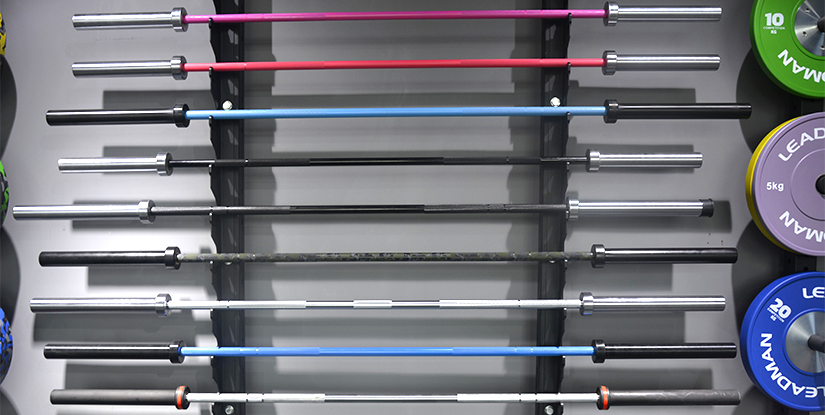The first time I tried the seated barbell bicep curl at the gym, I thought I had it down. I mean, it’s just a curl, right?
But nah—something felt off immediately.
My elbows flared out. My lower back started doing more work than my biceps. And worst of all? My arms weren’t even sore after the workout. Like, at all.
At first, I figured maybe it was just an off day. But then I saw a post that hit way too close to home. Made me realize it probably wasn’t the curl that sucked—it was my setup.
That’s when I decided to actually learn how to do it right.
How to Actually Do the Seated Barbell Bicep Curl
Alright—here’s what finally fixed my seated barbell bicep curl form.
I sat down, literally and mentally. Took a step back and broke the setup down. Once I cleaned that up, the exercise hit way different.

Here’s what worked for me:
- I used a flat bench and sat upright—no leaning, no slouching.
- Planted my feet flat on the floor, locked in.
- So yeah, I kept my chest up, abs tight, and back straight—nice and locked in.
- After that, I grabbed the barbell with a solid underhand grip, right around shoulder width.
- Most importantly? I pinned my elbows tight to my sides. No flaring.
- Curled the bar slow, smooth, and controlled. No jerking, no bouncing, no ego lifts.
Basically, I stopped trying to move the weight—and started making my biceps move it.
And here’s a little side note
👉If you’re using an EZ bar instead of a straight bar? Totally fine. Same form rules apply. The angled grip just helps take some heat off your wrists. Everything else stays locked in.
Once I dialed this in, I finally felt the biceps doing all the work. Zero elbow pain, and way better pump.
What Muscles the Seated Barbell Bicep Curl Actually Hits
Once I nailed my form, I started paying attention to what was actually working. And yeah—the seated barbell bicep curl definitely hits the biceps hard. But not just one part.
Here’s what I felt most:
- Mainly, it smashed my biceps brachii, especially the short head. That’s the part that gives your arms that thick, wide look from the front.
- I also noticed my brachialis firing up. That’s the muscle under the biceps that pushes them up—makes ‘em look taller.
- And my brachioradialis (that thick line along your forearm) got in on the action too.
Because you’re seated and not swinging around, your body can’t cheat. So all that tension stays locked on your arms. No momentum. No weird back lean. Just strict curls and clean reps.
It’s not flashy, but it’s a killer if you do it right.
Tips That Saved My Elbows, Form, and Sanity
After messing around with seated barbell bicep curls for a while, I picked up a few tricks that honestly saved me from wrecking my elbows—and my patience.
- First off, I always warm up. A few light sets with dumbbells or resistance bands go a long way. My elbows thank me every time.
- Next, I keep my wrists straight. No bending them back like I’m flicking the bar up. That just leads to pain.
- Also, I start lighter than I think I need to. This curl sneaks up on you fast, especially since you can’t cheat with body movement.
- I had to quit leaning back mid-rep. If I have to swing it, the weight’s too heavy. Period.
- And if my wrists ever start barking? I switch to an EZ bar. The angle is way friendlier on the joints, but it still crushes the biceps just fine.
Little things, big difference.Once I cleaned up my seated barbell bicep curl form, everything just clicked. In a busy commercial gym, it’s one of the simplest ways to train smarter—not harder.
FAQs about Seated Barbell Bicep Curl
Yes, seated bicep curls are highly effective for isolating the biceps and promoting muscle growth and strength. This exercise minimizes the involvement of other muscles, allowing for better focus on the biceps brachii. The seated position reduces body momentum, ensuring that the biceps bear the majority of the load during the movement.
Additionally, seated bicep curls allow for controlled motions, which increase time under tension, a key factor in muscle development. Whether performed with a barbell or dumbbells, this exercise is ideal for achieving well-rounded arm training. It is suitable for lifters of all levels, making it a versatile addition to any commercial gym routine.
Seated barbell curls primarily target the biceps brachii, focusing on both the long and short heads. These muscles are essential for elbow flexion and contribute to the overall size and shape of the upper arms.
In addition to the biceps brachii, the exercise activates the brachialis, a muscle beneath the biceps that adds arm thickness. Forearm muscles, including the brachioradialis, are also engaged to stabilize the barbell and maintain grip strength. This combination of muscle engagement makes seated barbell curls an effective exercise for building arm strength and enhancing muscular balance.
To perform seated bicep curls correctly, sit on a sturdy bench with your feet flat on the floor. Hold a barbell with an underhand grip, keeping your hands shoulder-width apart.
Begin the movement by curling the barbell upward toward your chest while keeping your elbows stationary and close to your torso. Pause briefly at the top to maximize bicep engagement, then lower the barbell slowly and in a controlled manner. Ensure your arms fully extend at the bottom without locking your elbows. Focus on maintaining a steady tempo throughout the movement to avoid momentum. Perform 3 sets of 10–12 repetitions for best results.
For seated bicep curls, the bench should be set at a 90-degree angle to ensure proper positioning. This angle minimizes body movement and isolates the biceps effectively. If performing an incline seated variation, adjust the bench to a 45–60-degree angle to increase the range of motion and target the biceps from a different angle.
The correct angle depends on the variation being performed and the specific muscles you want to emphasize. Always prioritize comfort and form to ensure the exercise is both safe and effective. Adjusting the angle slightly can also help cater to individual preferences or fitness goals.

Hi, I’m the editor here at Leadman Fitness. We’re a manufacturer focused on producing top-quality barbells, plates, kettlebells, dumbbells, and strength training gear. I’ve been into sports and fitness for years, and I know my way around all kinds of gym equipment—both from using it and helping create it.
I spend a lot of time understanding the real problems people run into in the gym—whether it’s beginners trying to pick the right gear or experienced lifters looking for something more durable. I stay in close touch with our production team and talk directly with other equipment makers, so we’re always improving based on what real lifters and coaches are looking for.
What I share comes from hands-on experience—stuff that actually helps people train better, not just in theory, but in real gyms.
